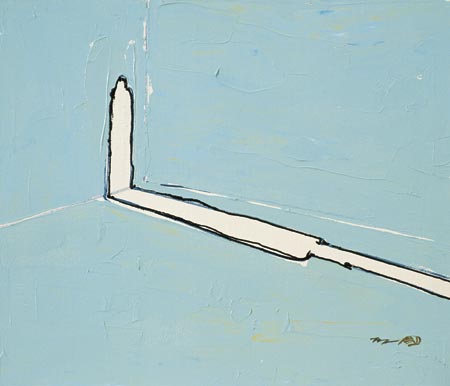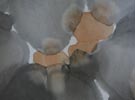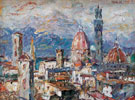
展览时间:2010-12-25 ~ 2011-01-21
展览地点:超城空间
参展艺术家:张立国
开幕时间:2010-12-25 16:00
展览介绍:
随着1992年邓小平发表南巡讲话,自1993年之后,中国进入了经济高速发展和社会稳定的时期。经济发展取代了意识形态批评,在此前相对匀质的中国社会开始走向分层,经济差异开始压倒意识形态差异。经济上比较匀质的和充满启蒙色彩的思想大解放的1980年代逐渐远去。在黄金的80年代产生的第一批职业或者更准确的说法是独立艺术家,在1990年代不得不面对严峻的生存压力。一旦脱离了旧有的单位,也就意味着这些人获得了创作的自由与权力,但是同时也失去了体制的保护和曾经免费获得的生活保障。在1990年代,中国的中产阶级还远未出现,艺术家试图通过社会或市场的方式获得经济来源基本难以实现。因此,在1990年代,尽管独立艺术家大量出现,但是真正的职业艺术家却难以形成规模。进入1990年代之后,张立国开始以正教授的身份在中央工艺美术学院中执教。这一点保证了他获得了并不充足但却稳定的生活来源,这保证了他有时间和精力继续从事独立的创作。经过1980年代的广泛探索之后,在1990年代,张立国开始形成自己的艺术语言。这种艺术语言建立在他此前所进行的绘画自律性的广泛探索之上,一种新美学开始形成。中国改革的目标——实现现代化,首先在张立国的绘画中实现了。这个现代化不是舶来品,而是真正建立在中国文化和艺术基础之上的现代化。张立国的绘画代表了新中国现代派绘画的最高成就,一种属于中国的现代性的美学,在他的作品中得以自然的体现。而进入1990年代之后,《影子》开始成为张立国最主要的创作主题,尽管这一主题在他此前的创作中若隐若现,但是自此,《影子》开始成为张立国新美学的最为有力的组成部分。
After the inspection speech in south China made by Deng Xiaoping in 1992, since 1993, China has entered the period of fast economical development and social stability. Economical development replaced ideological criticism, and the relatively equal society in China started to stratify, and economical differences overrode ideological differences. The first profession in the golden 80s, or the independent artists to be exact, was faced with harsh living pressure. Separated from the old units, they got the right and freedom to create, but at the same time, they lose the protection of the system and the free living guarantee. In the 1990s, the middle class in China did not appear, and it was hard for the artists to gain income from the society or the market. So, even if artists appeared in large amount in the 1990s, real professional artists did not form a scale. In the 19902, Zhang Liguo began to teach in the Central Academy of Art and Design as the formal teacher. Thus he had the insufficient but stable income; it guaranteed that he had the time and energy to proceed with independent creation. After the wide exploration in the 1980s, Zhang Liguo formed his own artistic language in the 1990s. The artistic language was based on the wide exploration into the painting autonomy he made before, and the new aesthetics formed.
Modernization—the aim of the reform in China, was realized in the first place in the paintings of Zhang Liguo. The modernization was not exotic, it was the modernization based on the culture and art of China. Zhang Liguo’s paintings represented the ultimate achievement of the modern painting after the founding of the People’s Republic of China, and the modern aesthetics belonging to China is reflected naturally in his works. And in the 1990s, Shadow started to be the major theme of Zhang Liguo’s creation, the theme could be seen vaguely in his former creations, but Shadow has become the most powerful componential part of Zhang Liguo’s new aesthetics ever since.
- 2011-04-30 ~ 2011-05-30出窍记·缪晓春个展
- 2011-04-29 ~ 2011-05-20静中人Figures of Silence —Michel Madore
- 2011-04-30 ~ 2011-05-14黑白
- 2011-05-28 ~ 2011-07-28四重奏——孟昌明水墨荷花作品展
- 2011-05-28 ~ 2011-06-24“远与近”意大利当代著名艺术家作品展
- 2011-05-28 ~ 2011-07-02底下有石头:杨心广个展
- 2011-05-21 ~ 2011-06-20湖滨诗境──Celest生态摄影展(续展)
- 2011-05-21 ~ 2011-06-05缓行——十二位八零后艺术家
- 2011-04-28 ~ 2011-06-05观天悟道——张国龙艺术巡展
- 2011-05-28 ~ 2011-07-10诺特·维塔尔:激浸










